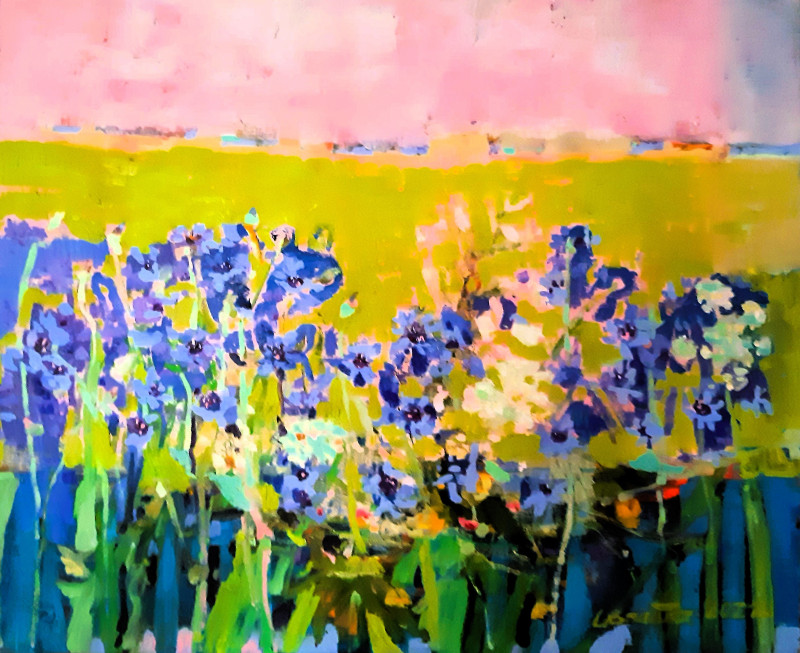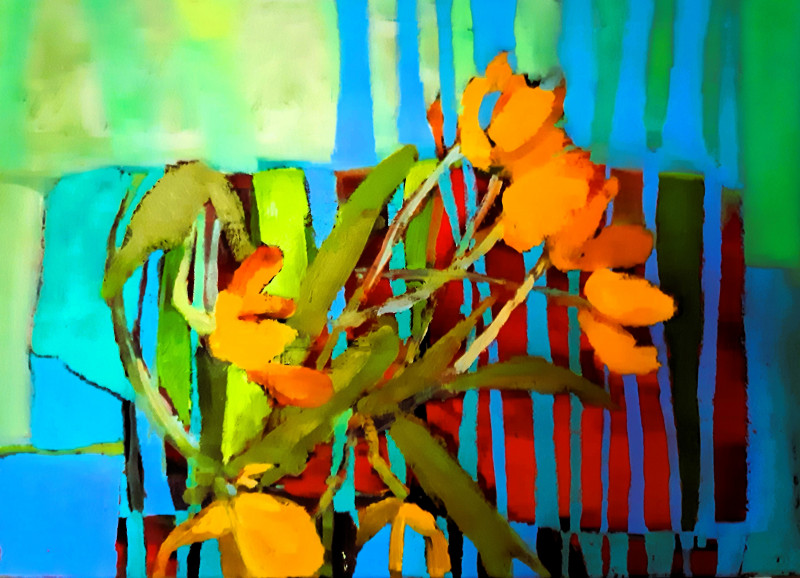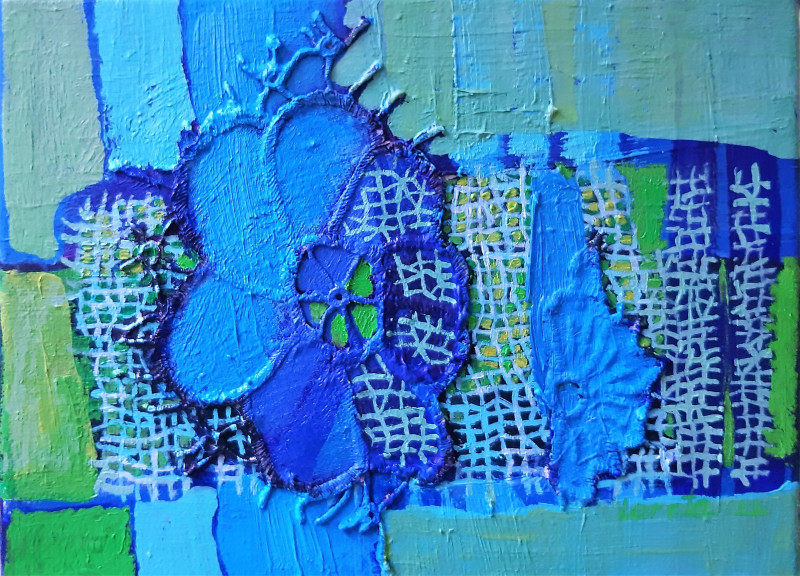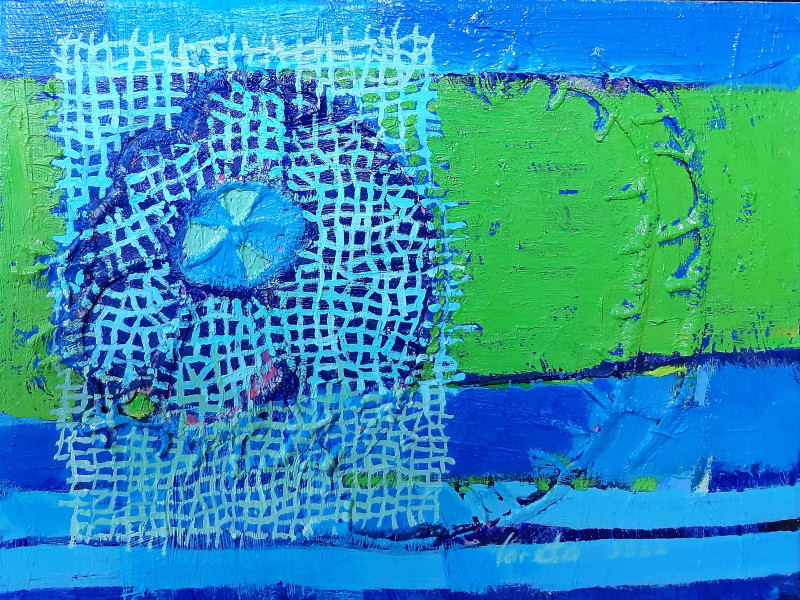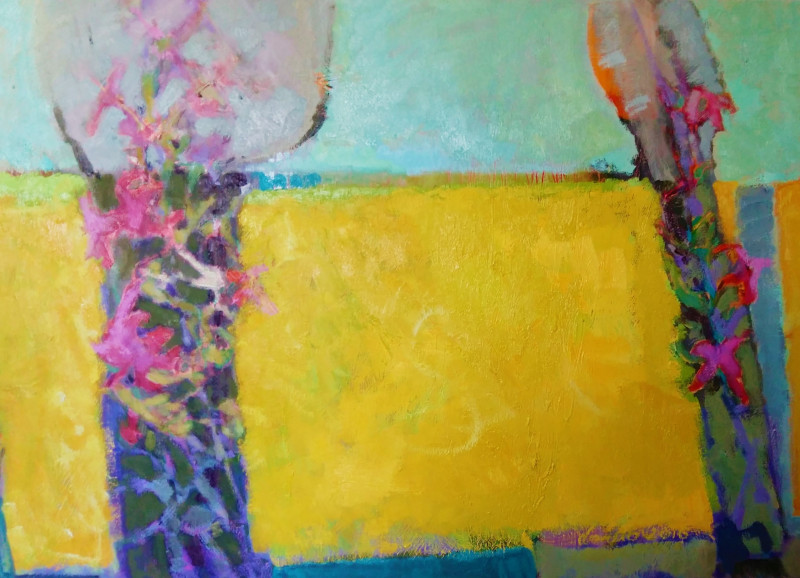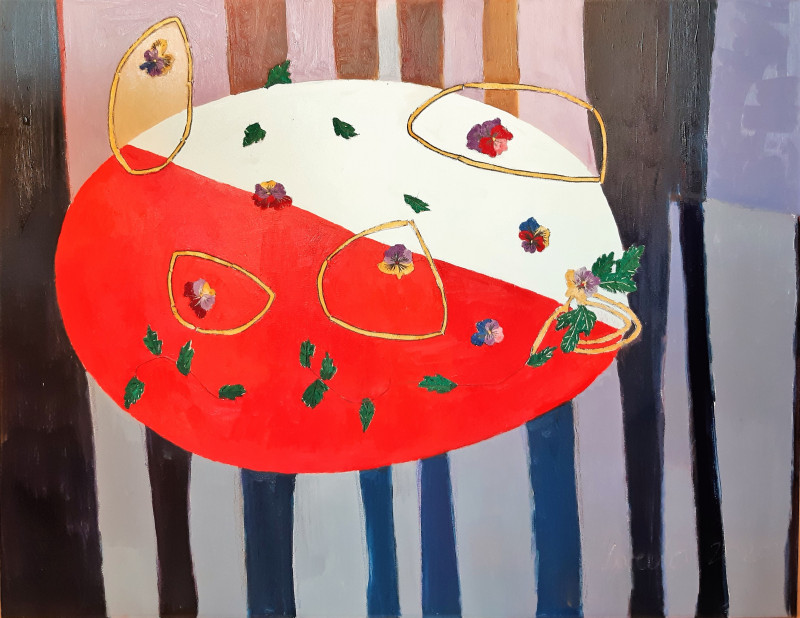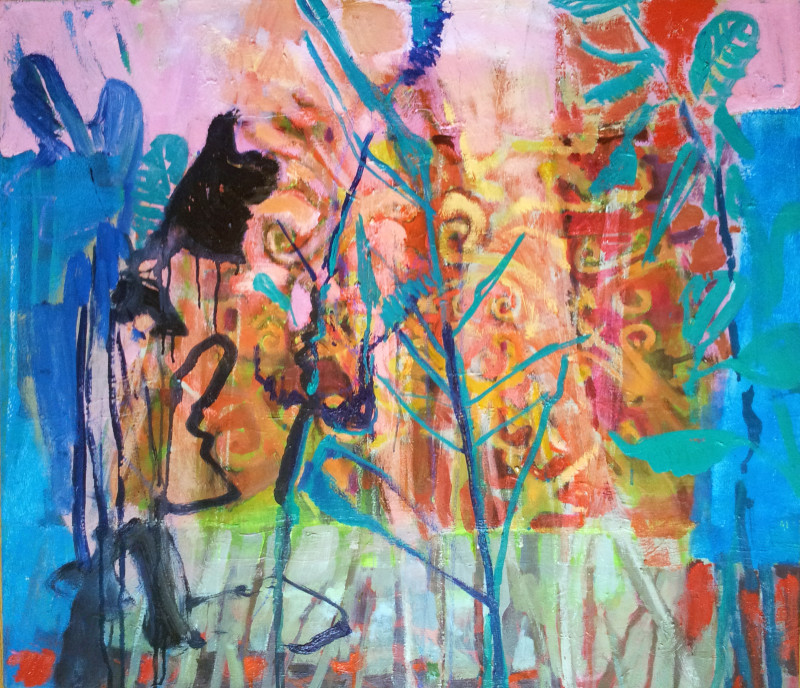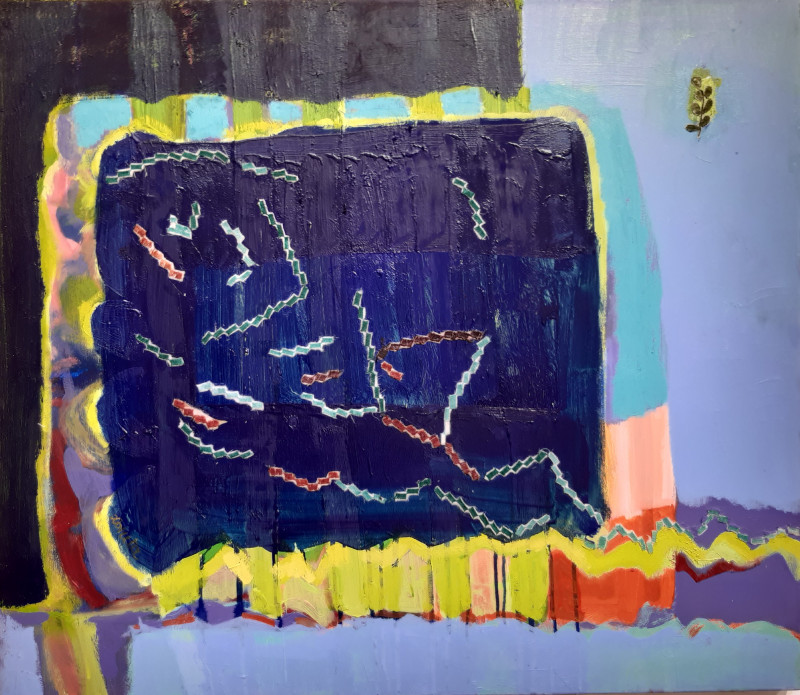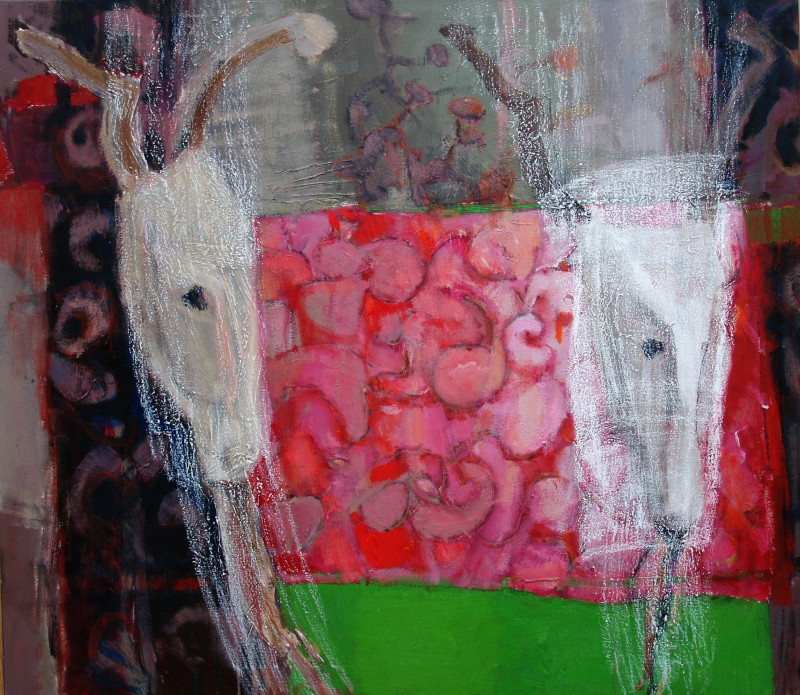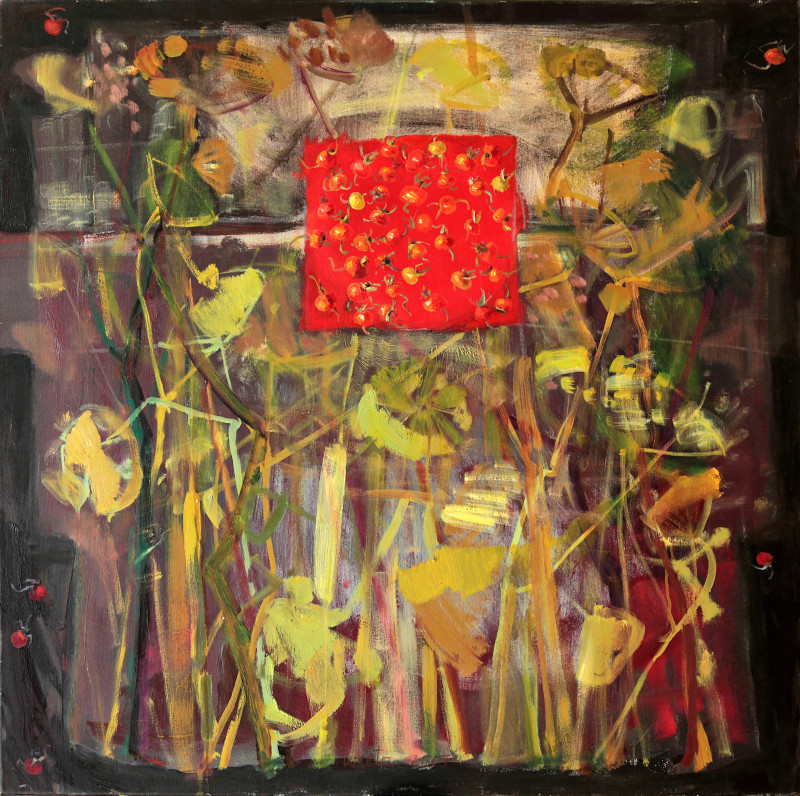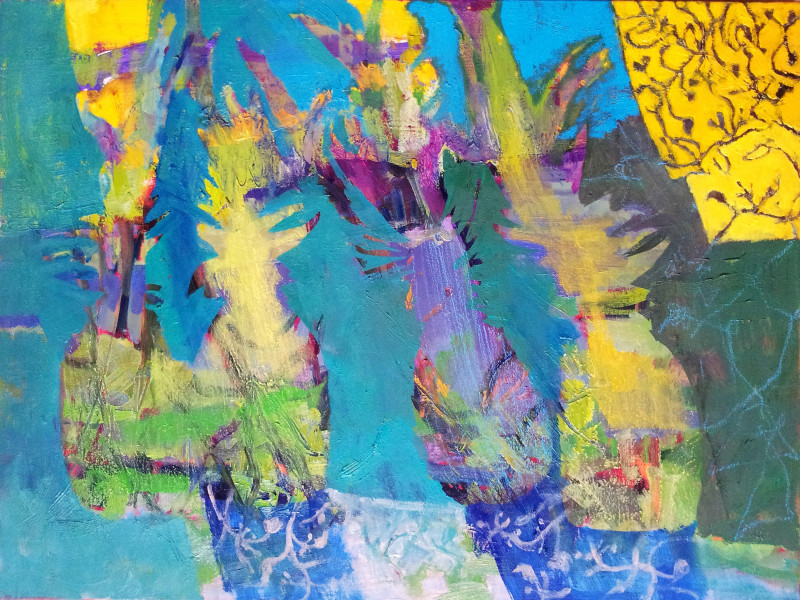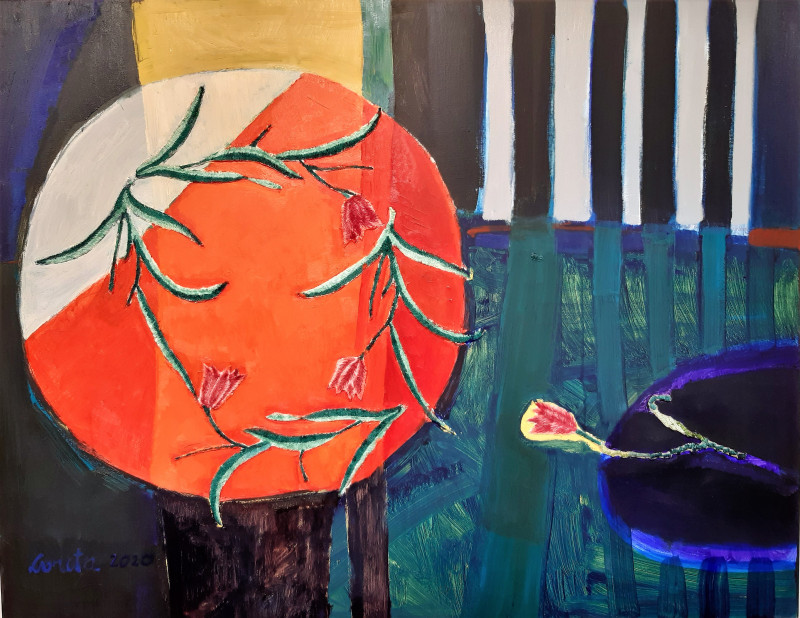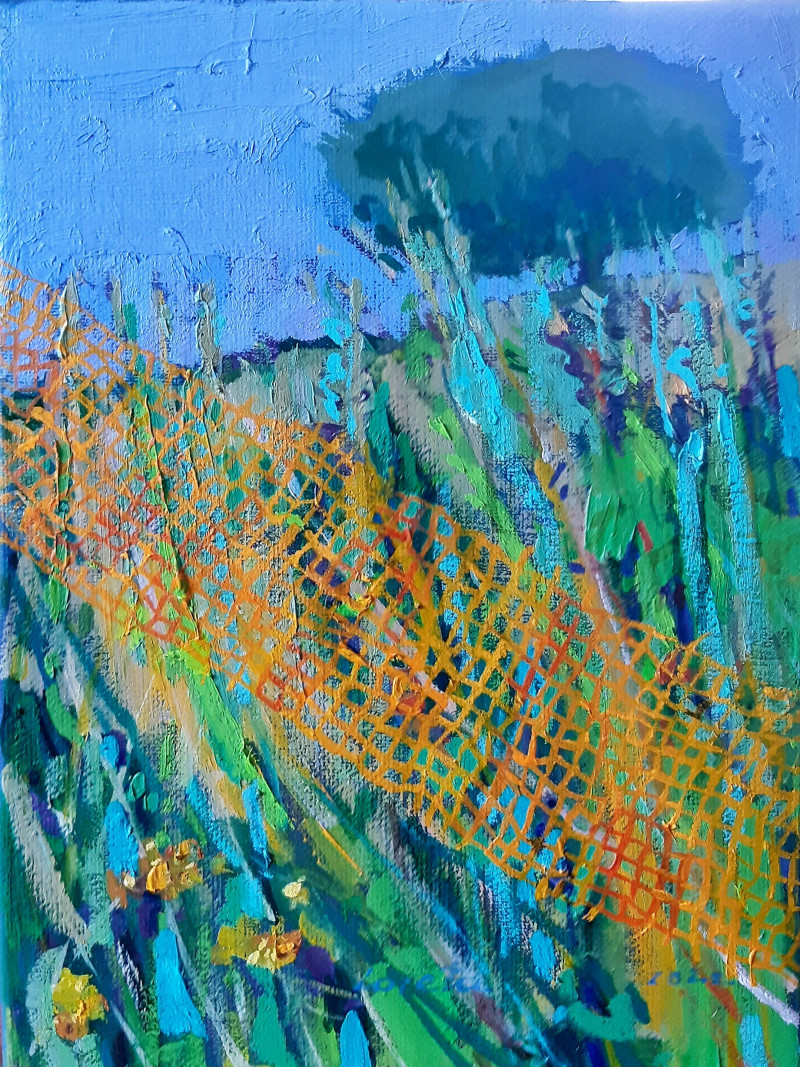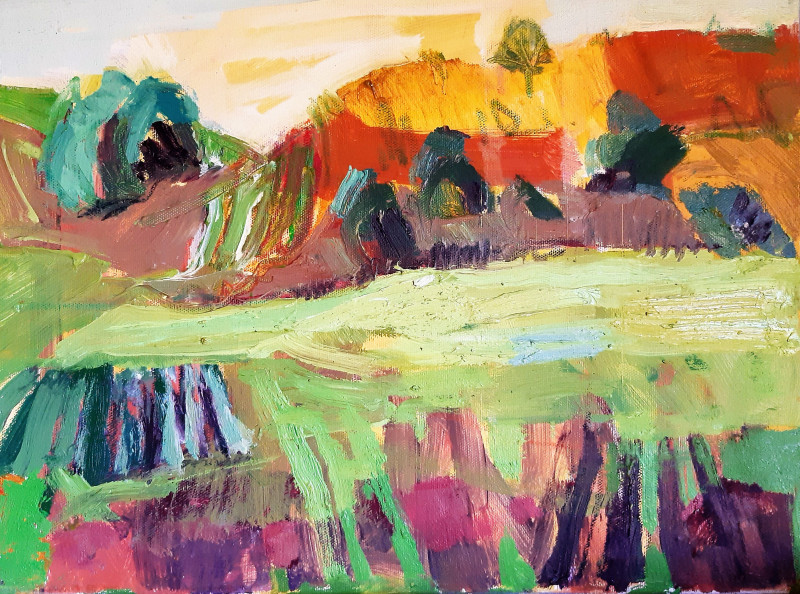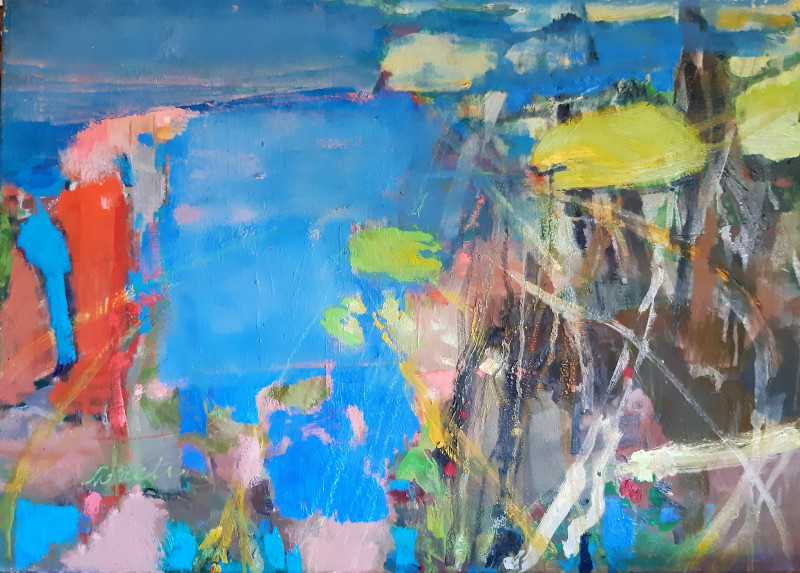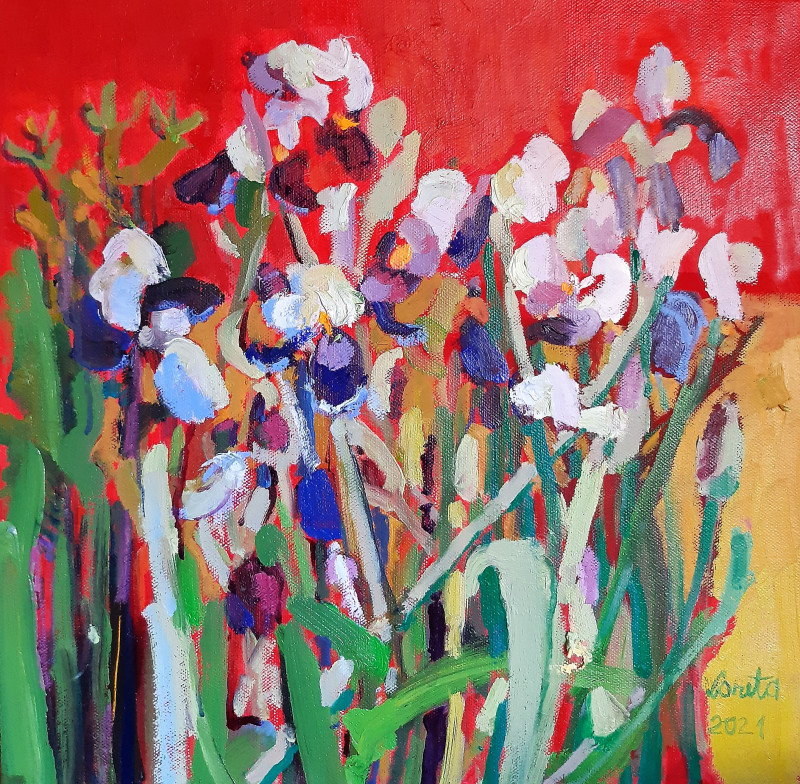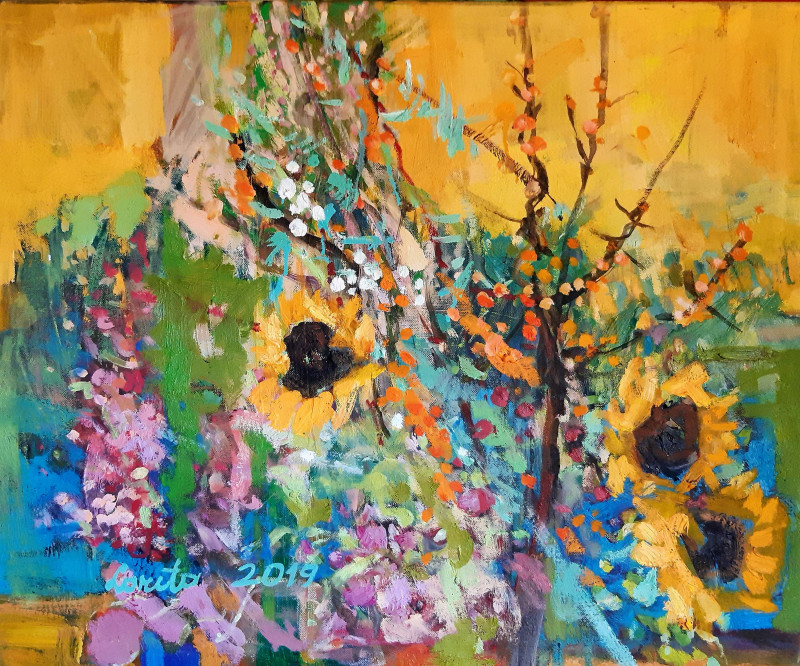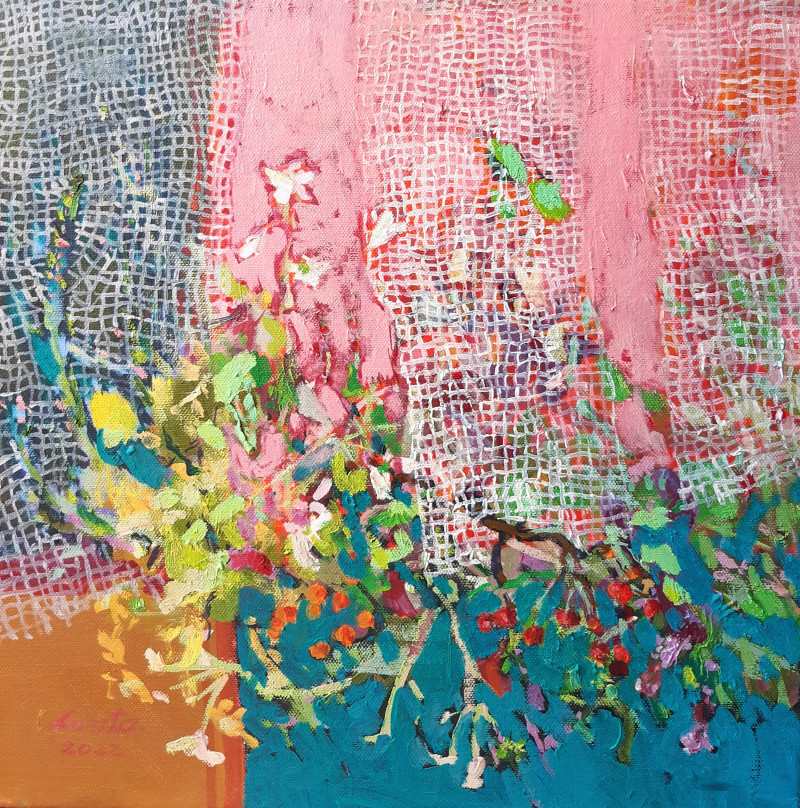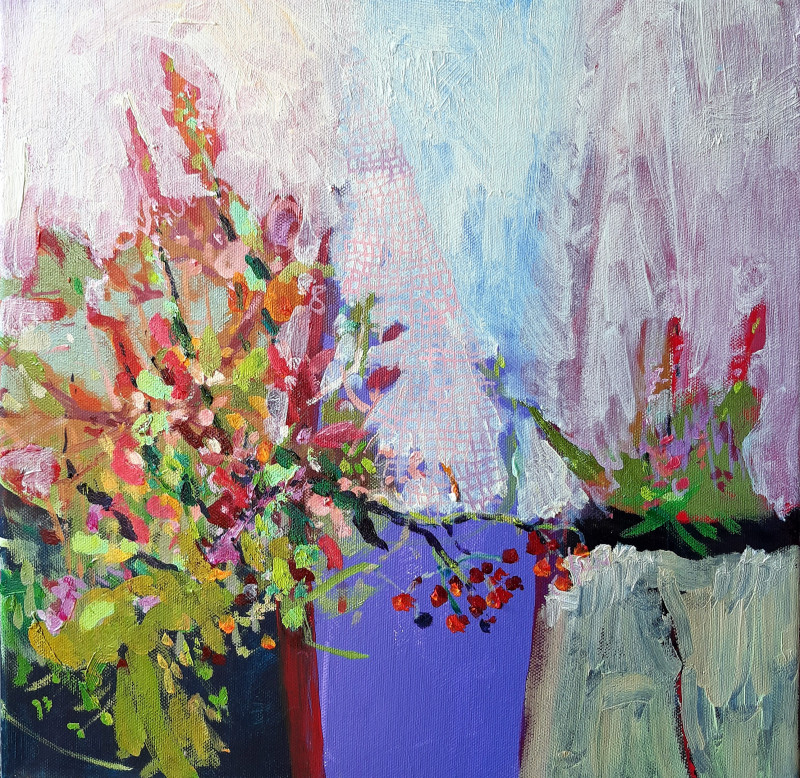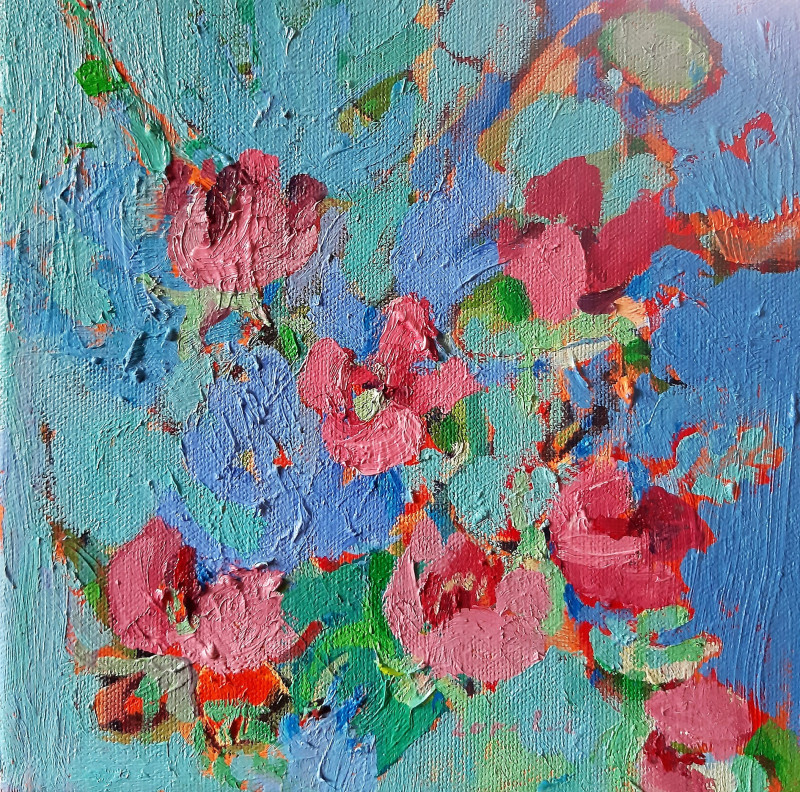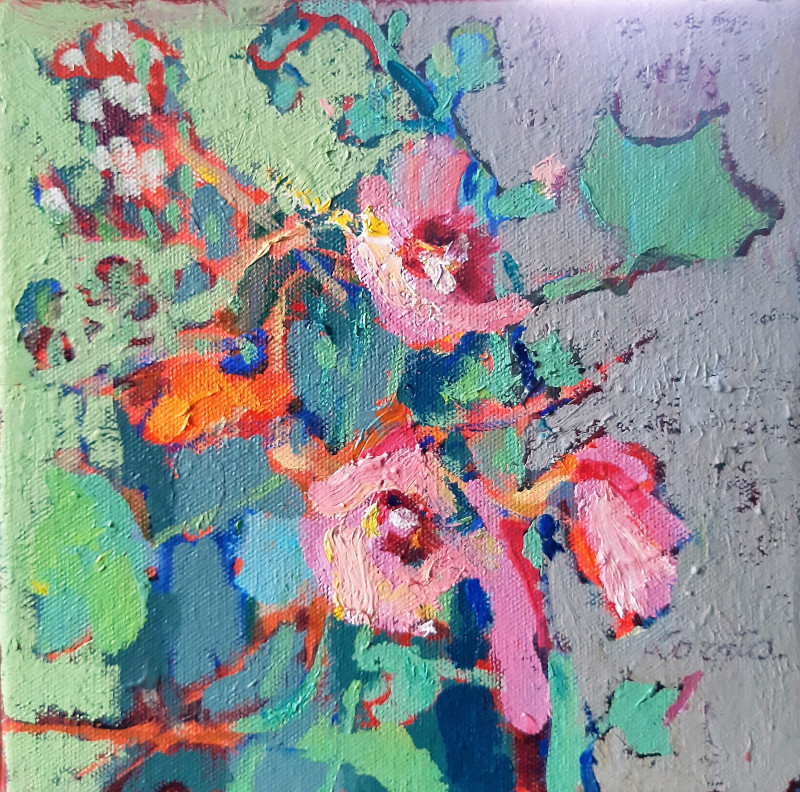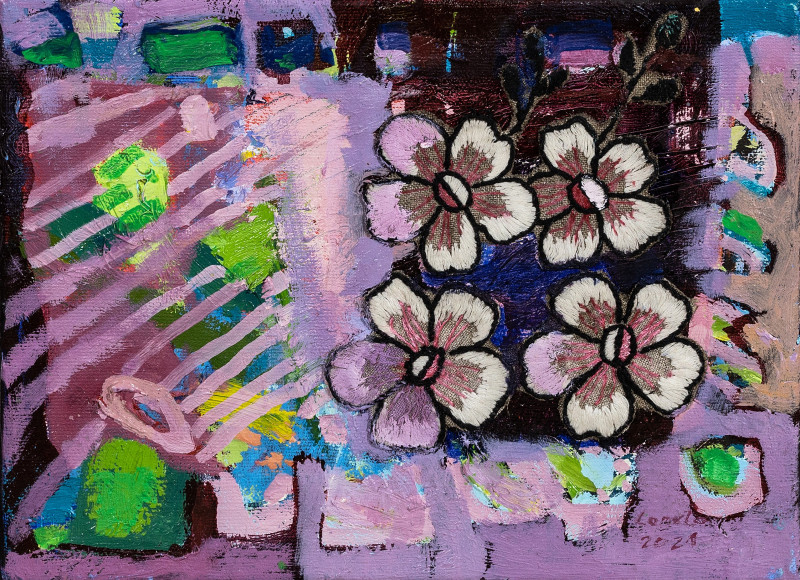Authors Artworks
About the author
Born in 1962 on March 11th in Tauragė. In 1988 graduated from Vilnius Art Academy, the faculty of fine arts.
Since 1990 has participated in various exhibitions. Has organized 21 personal exhibitions, the paintings have been exhibited in more than 100 group exhibitions. Her paintings are in private collections in Lithuania and abroad.
Since 2002 is the member of the Lithuanian Artist Association.
“She paints sensitively and likes to surprise.” This is how we usually describe the work of artist and art teacher Loreta Zdanavičienė. This time we encounter an unexpected collection of her paintings on old embroideries.
It all started back in 2002 when Loreta organized an exhibition, “Letters to the Past,” at the St. John’s Street Gallery, where she exhibited her first paintings on embroidered linens. In general, there is a sense of respect for the historical relic in all of her work, whether it is a recreation of a real object or a painting on the old object itself. On the other hand, she is always concerned with the recognizable form of things, especially if we look closely at the extremely realistic details of her still life drawings.
Plants, flowers, and patterned textiles are probably the favorite motifs of Loreta’s creative work. Thus, it is not surprising that she chooses to paint upon the embroidered handiworks with floral or geometric patterns that she finds or receives as gifts. Each embroidered fabric, whether a bedspread, tablecloth, napkin, pillow cover - is painted over beautifully, meticulously with great care and respect, preserving and highlighting the beauty of the old textiles. Often the authentic material scraps are sewn together to form the base of the painting, thereby reinforcing the impression that this heritage is significant.
The stories about the authentic embroidered “textiles” become a meaningful accent of this cycle of creative works. Loreta meticulously retains those stories in her memory and has written some of them down. By painting on old handmade fabrics, the artist seems to preserve the history of that object, continuing its life through her paintings. An authentic embroidered pattern or its fragment dictates the compositional structure and color scheme of Loreta’s paintings. In some cases, the artist subtly combines the ornamentations of the embroidery to create a unified, brightly colored or monochrome “carpet,” while in other cases she uses the contrasting rhythm of the embroidered pattern to extend the original combination of lines and shapes.
When looking at Loreta Zdanavičienė’s “Embroidered histories” I believe we will remember not only the sources of women’s creativity, and the tradition of girls amassing a dowry, but also our sutartinės, which the brides-to-be used to sing while embroidering. For me, this is like a unique metaphor whereby Loreta masterfully repeats the authentic embroidered patterns with her own “painting voice.”
“Singing sutartinės they embroidered cloth, I paint letters to them.
The wheel always spins around and everything returns to where it started.”
Art Historian Rita Mikučionytė
Lithuanian Artists’ Association Member


